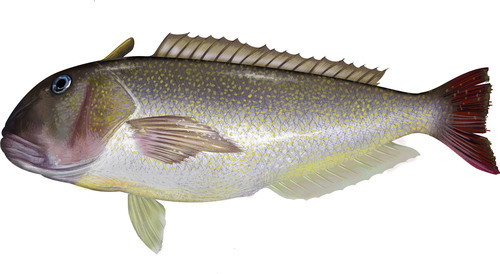
Both parts of this meal were roasted. It’s a cooking process I won’t want to work with very often as the weather warms, but it has a lot going for it.
I don’t know that porgy has a season as such, but asparagus, or at least the best asparagus does. This was the best asparagus.
I normally go very easy on accoutrements for this noble vegetable, but I loosened my own constraints this time in order to add ramps, plus a few branches of thyme, to moderate the more exuberant tendencies of the these wonderful spring alliums, although these ‘wood leeks’ are actually pretty mild.
Rather than purchasing asparagus bunches already assembled by the farmer, I like ‘picking’ my own, in order to get a consistent size, and also, I suppose, to feel just a wee bit closer to the earth. Besides, I’m keeping some rubber band alive a little longer. I’d say they also look prettier that way for their portrait.

It was the best asparagus I’ve ever had, but who knows what that means? I know I’m at least safe in saying so, because I can’t actually be proven wrong.
As for the treatment of the fish, there was only one herb, some breadcrumbs, and a little lemon. I added a garnish of purple micro greens at the end, for a refreshing, raw element, but also to introduce a third color to the plates.
The fillets were therefore not disguised, and they were delicious – as fish, which is a good thing.
- two 7-ounce porgy fillets from P.E. & D.D. Seafood, scored with several very shallow slashes on the skin side, to prevent curling, put into a tin-lined copper au gratin dish, skin side down, sprinkled with chopped dill from Phillips Farm (although almost any fresh herb would do as well), sea salt and freshly-ground Tellicherry pepper, some homemade dry bread crumbs scattered lightly on top, and a bit of olive oil drizzled over all, placed in a 425º oven for about 12-15 minutes, removed, arranged on plates, drizzled with juice from a sweet local lemon grown by Dave at Fantastic Gardens of Long Island and finished with purple radish micro greens from Windfall Farms
- fourteen stalks (a little over a pound) of moderately-thick green asparagus spears from John D. Madera Farm, trimmed, the stems peeled, mixed with the white sections of 14 ramps from Dave of Max Creek Hatchery, rolled with a handful of thyme branches from Eataly in a little more than a tablespoon of olive oil, a little sea salt, and a bit of freshly-ground Tellicherry pepper inside a large Pampered Chef unglazed ceramic pan and roasted at 425º for about 15 to 20 minutes, with 6 or 8 green ramp leaf sections, roughly-chopped, thrown onto the top just before they had finished cooking, removed to 2 plates and drizzled with more of the juice from the local lemon used on the porgy
- the wine was an Austrian (Kremstal) white, Steinig Grüner Veltliner Austria 2015, from Chelsea Wine Vault
- the music was the album of contemporary chamber music, ‘Light-distance: Portuguese Wind Quintets‘


























